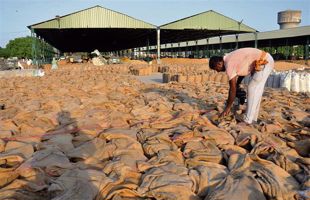
Photo source: Thinkstock
Washington
Analysing sweat left behind at a crime scene can help determine the number of people who were there and narrow down on the criminal, scientists say.
An average square inch of skin contains 650 sweat glands, which means that our bodies leave small amounts of sweat on everything we touch - whether we're making a phone call, eating supper or committing a crime, researchers said.
They believe investigators can use these tiny, often invisible skin secretions to their advantage.
"Each of our skin secretions are different and, therefore, unique to us. Like a fingerprint. Also, we are continuously secreting sweat throughout the day that is being deposited in small amounts as we travel and touch various objects," said Jan Halamek, an assistant professor at the University at Albany in the US.
"By combining these concepts, we were able to show that, statistically, sweat left behind at a crime scene can help forensic investigators," said Halamek.
Skin secretions contain a large number of amino acids and metabolites that can be targeted once detected on a surface, researchers said.
The team measures the levels of three of those metabolites—lactate, urea and glutamate. Lactate appears in high concentrations of our sweat and varies greatly based on a person's lifestyle.
Urea and glutamate, also highly concentrated, are found in different parts of our sweat. The chances of two people having the same levels of all three metabolites is virtually zero.
To test their analysis, the team created 25 mimicked sweat samples and took another 25 authentic sweat samples from the forearms of volunteers. Their results indicated that all 50 samples were easily distinguishable.
The next step is to test real crime scene samples.
"Investigators tend to overlook the presence of sweat at crime scenes. Our paper is proving it has value," Halamek said.
"Without sufficient DNA evidence, which can take days or weeks of analysis, it can be difficult to determine how many people were present at a crime scene. We can quickly gather that information," he said.
The analysis currently is unable to match the sweat samples with individuals. This is because metabolites are known to fluctuate over time due to lifestyle changes.
For example, some metabolite levels vary with exercise or diet, while others might when a person is sick. However, his lab is beginning to monitor patterns in fluctuations, with a long-term goal of creating a "sweat profile" database. PTI



























